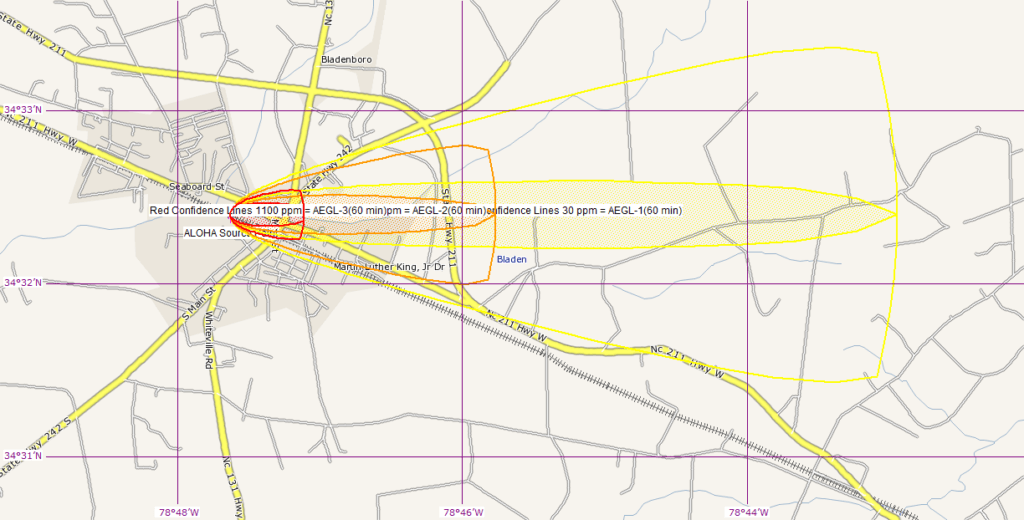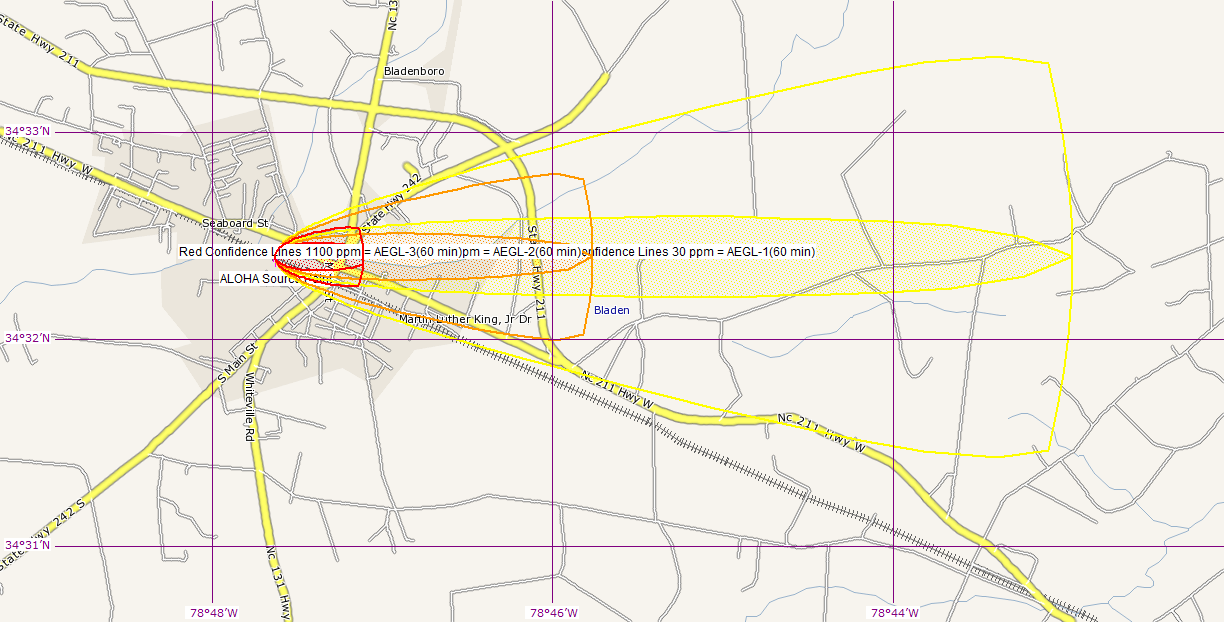NC Rail Hazmat Incident Could Have Been in Your Backyard
It is still not known why nine rail cars in a 109-car train derailed from the CSX tracks in downtown Bladensboro, NC on this past weekend. Four of the derailed cars were listed as containing hazardous materials, and one of them was full of anhydrous ammonia (NH3), a toxic inhalation hazard.[1] This dense gas, when released, is heavier than air, and can seep into the ground. Emergency responders evacuated 300 people to an elementary school shelter.
We modeled this incident using data from that day’s weather and determined that 518 people lived in the “red zone” (see map below) downwind of the incident and could have potentially been impacted if that rail tank car of NH3 was compromised.

Late last year we described another hazmat rail incident in Paulsboro, NJ involving vinyl chloride spilling into a tributary of the Delaware River (NJ Train Derailment Begs Us to Ask: Do You Know What Is Transported Through Your Back Yard?). These incidents serve as an important reminder to emergency managers to learn what is being transported “through their backyard” and to work with freight railroads to learn about the challenges surrounding hazmat rail incidents. Since railroads connect urban areas across the county, hazmat rail incidents can affect populated areas. Often railroad incidents occur in remote areas or areas not served by highways and pose unique challenges for the response and clean up.
North Carolina ranks third in the nation for chemical production.[2] Anhydrous ammonia is one of the top hazardous chemicals transported in North Carolina, used primarily in the production of fertilizers.[3]
IEM helps emergency managers identify the most hazardous chemicals stored in, or transported to, their counties to be prepared in the event of one of these low-probability/high consequence incidents.
Author: David Willauer, Transportation Manager
Sources
http://triangle.news14.com/content/top_stories/685664/small-police-force-responds-to-big-emergency-at-bladenboro-trail-derailment
http://fayobserver.com/articles/2013/02/04/1234825?sac=fo.community/bladen
[1] Fayetteville Observer, Feb 3, 2013.
[2] American Chemistry Council, 2012.
[3] North Carolina Regional Hazardous Materials Study Series, NCEM 2009-2013.





